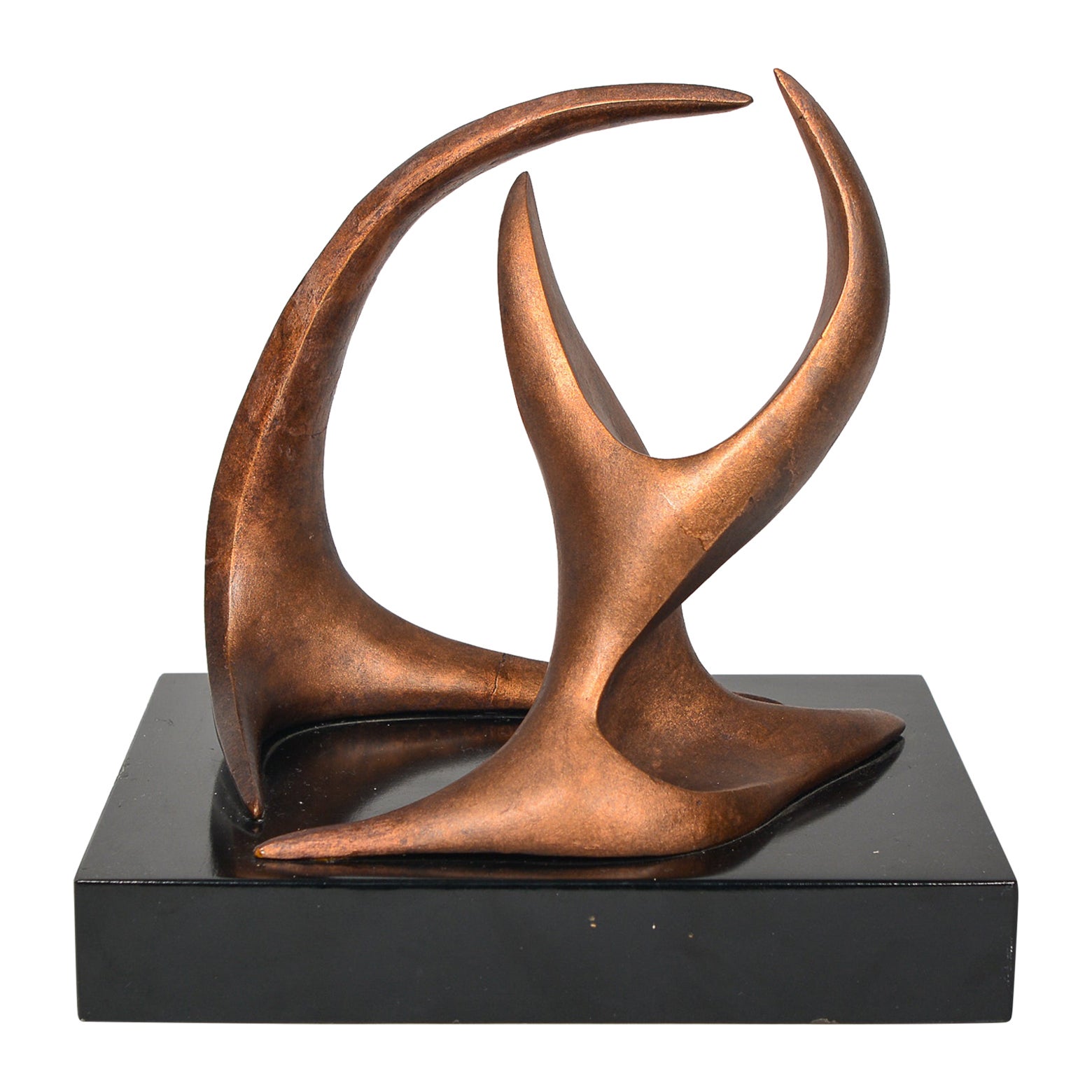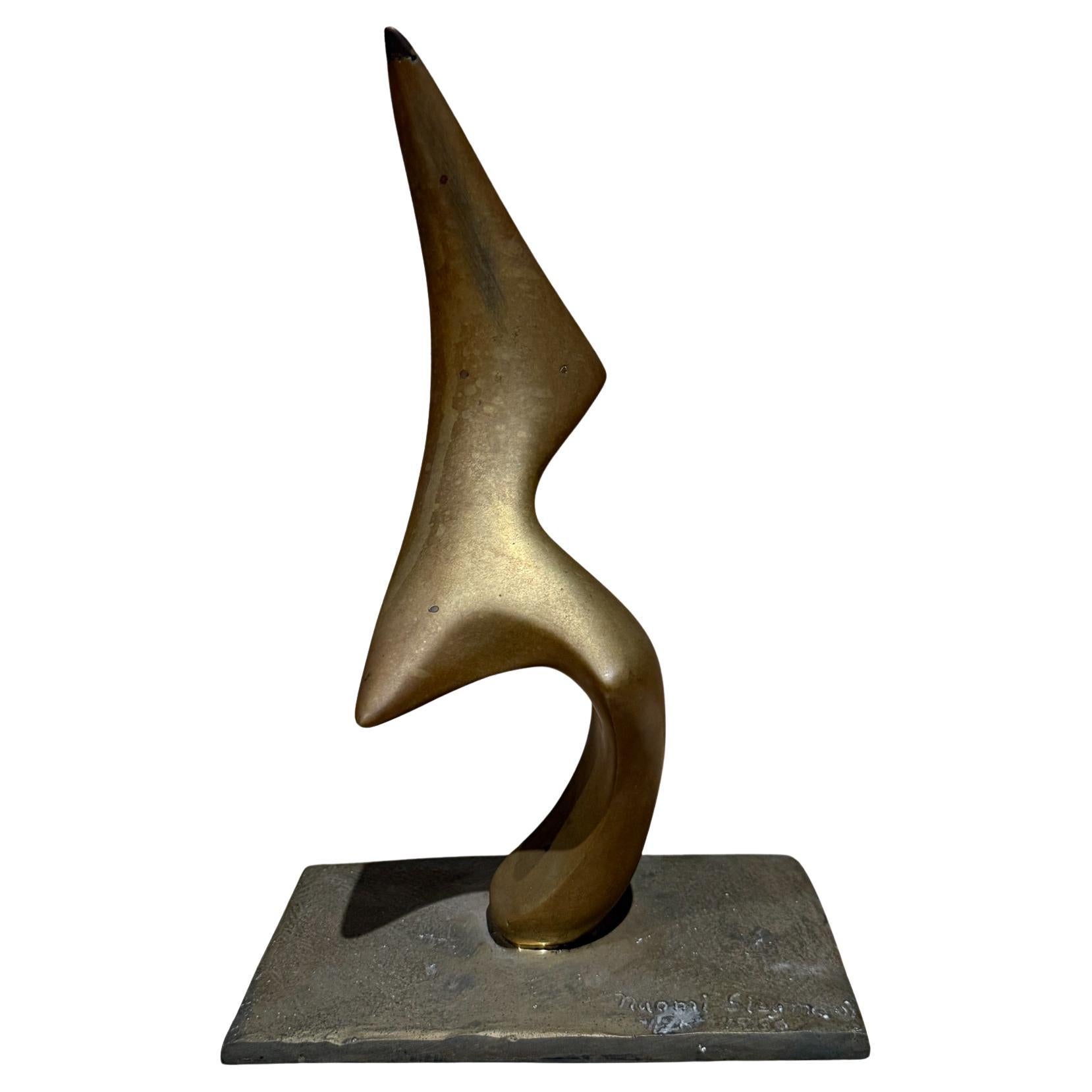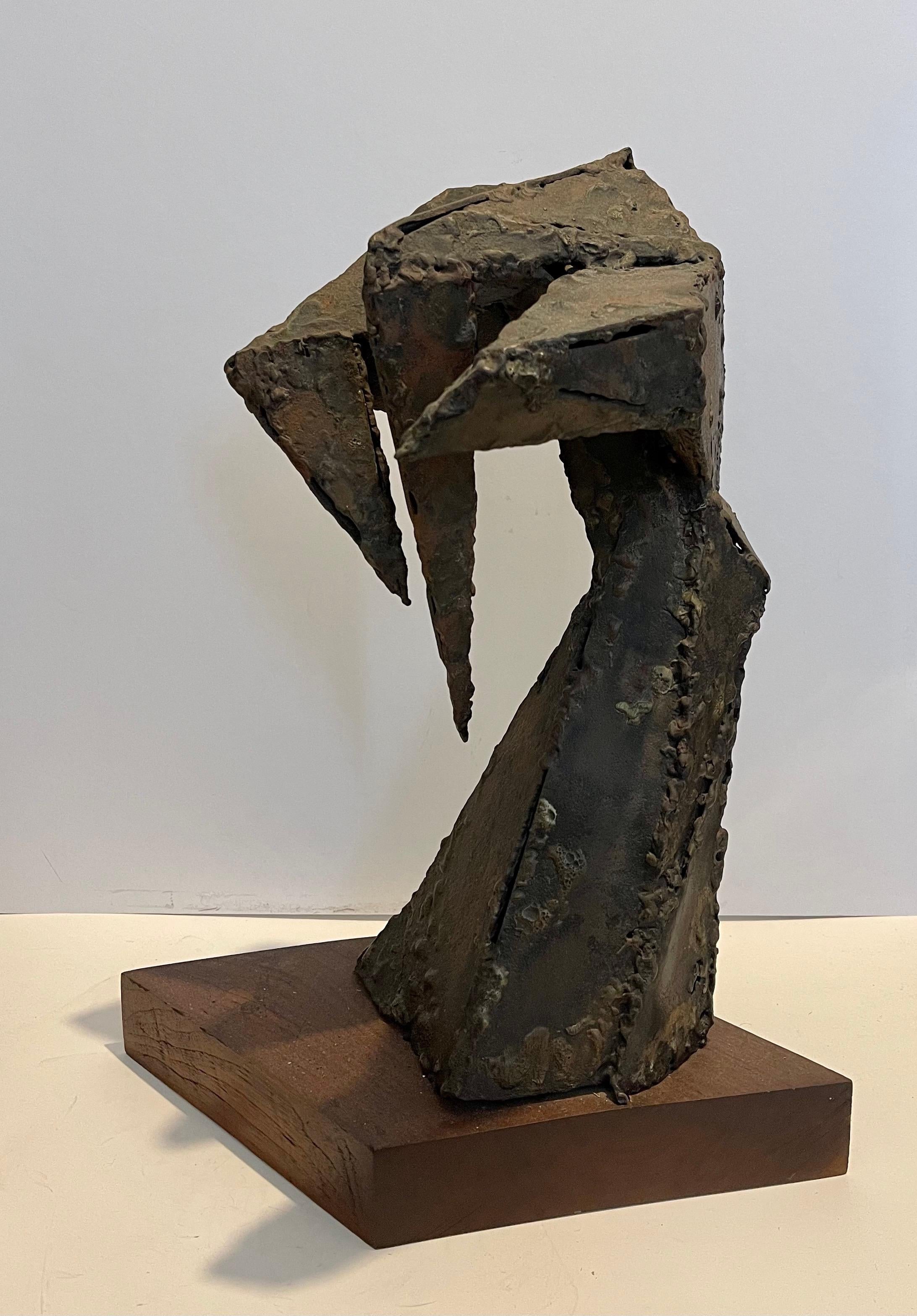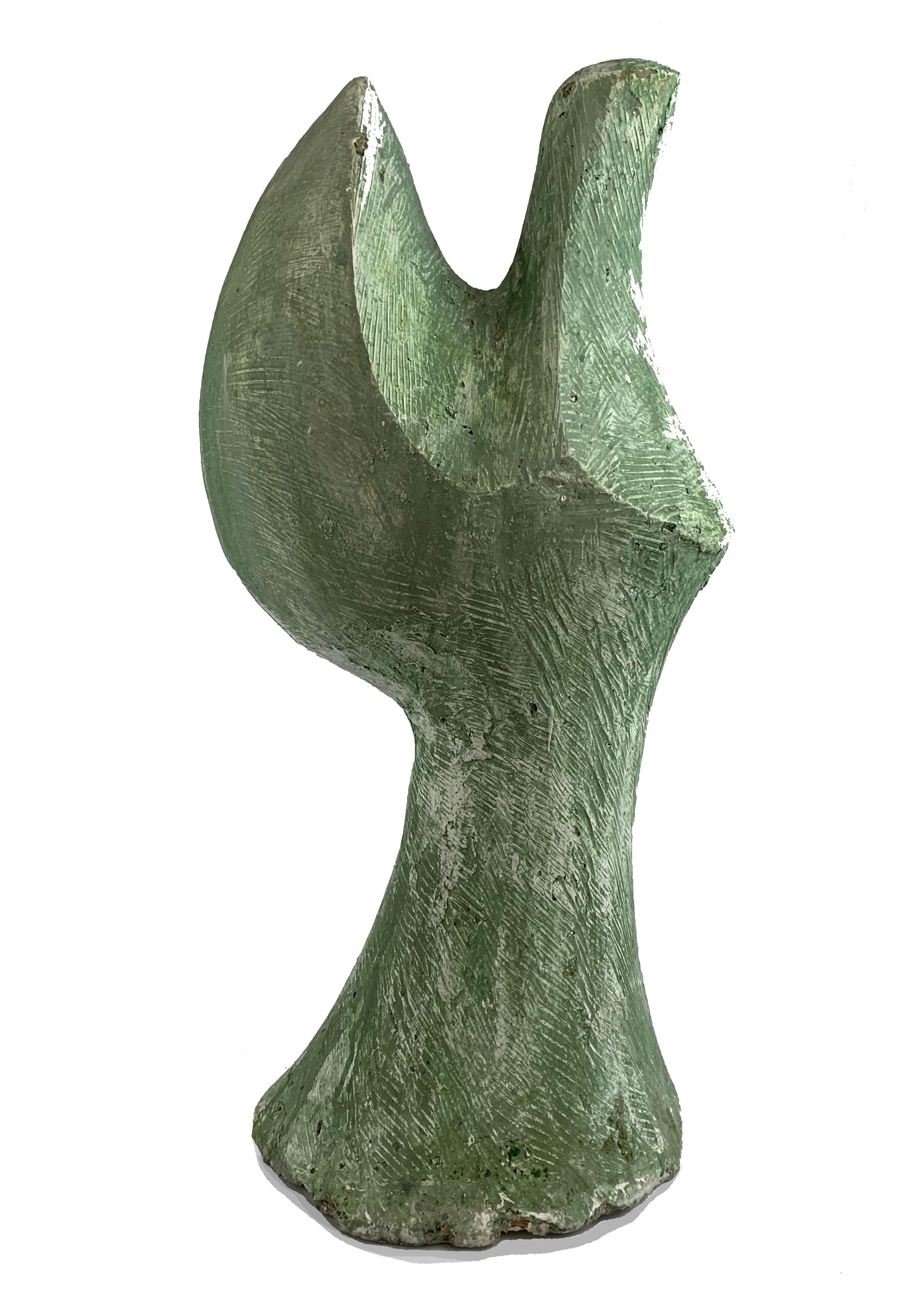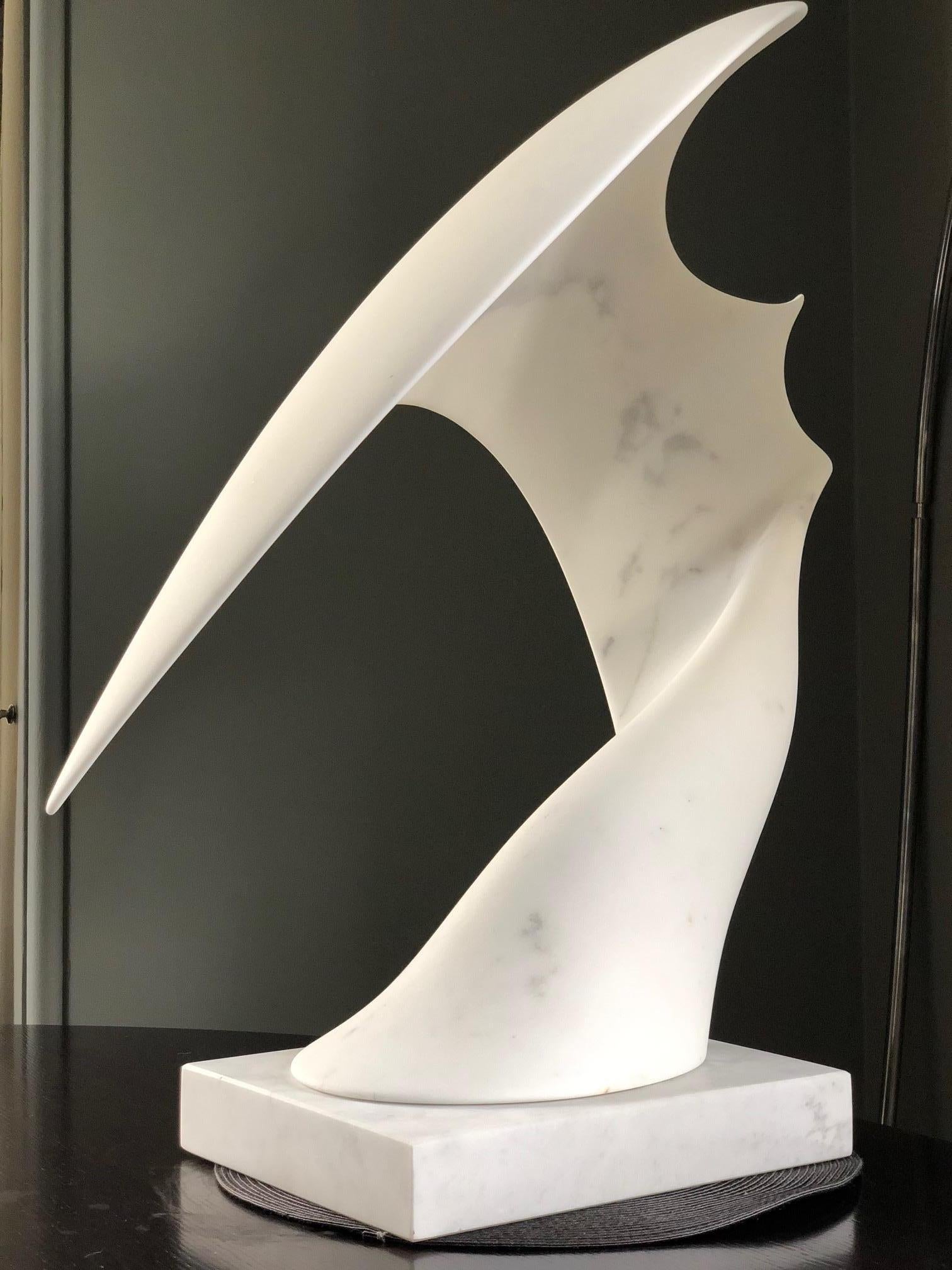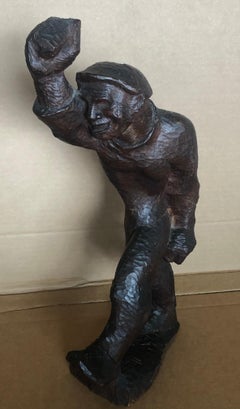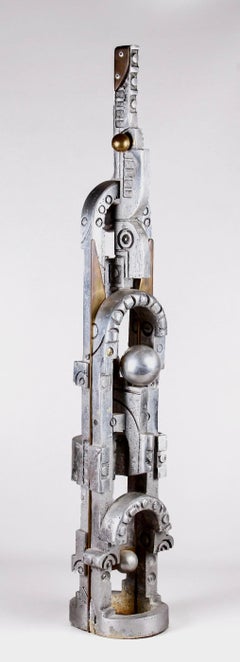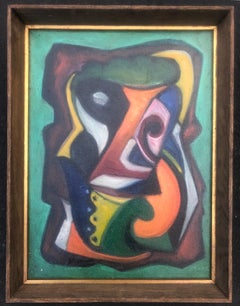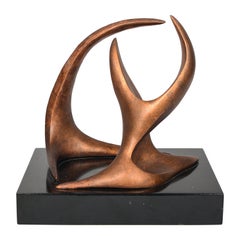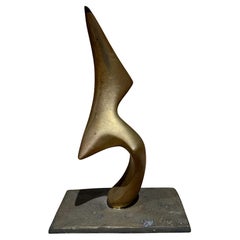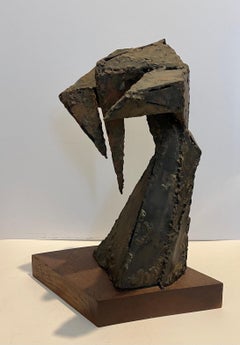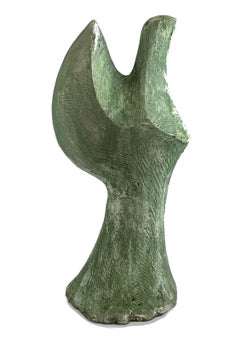Items Similar to Abstract Sculpture Mid 20th Century Modern Non Objective Biomorphic Plaster WPA
Want more images or videos?
Request additional images or videos from the seller
1 of 4
George L.K. MorrisAbstract Sculpture Mid 20th Century Modern Non Objective Biomorphic Plaster WPA1930s/40s
1930s/40s
$25,000
£19,120.61
€21,881.65
CA$35,581.86
A$38,524.79
CHF 20,481.86
MX$464,635.50
NOK 257,570.88
SEK 240,129.42
DKK 163,428.20
About the Item
Modern artist George L.K. Morris created this abstract biomorphic nonobjective plaster sculpture during the WPA era of the 1930s / 40s. Monogrammed.
Though George Lovett Kingsland Morris studied with realist painters John Sloan and Kenneth Hayes Miller at the Art Students League, the influence of their points of view was replaced by that of abstractionists Amedee Ozenfant and Fernand Leger. The paintings of Morris were two-dimensional, hard-edged and brightly colored.
Born in New York City in 1905, Morris became a full-fledged abstractionist and a founder in 1936 of the American Abstract Artists. He edited "The World of Abstract Art, the group's publication, and was their president from 1948-1950.
Morris had graduated from Yale in 1928 and studied at the League until 1930, when he went to Paris to attend the Academie Moderne. A sculptor, writer, art critic and teacher in addition to abstract painter Morris himself later taught at the Art Students League from 1943-1944, as well as St. John's College, Annapolis, Maryland, 1960-1961.
Morris' intrinsic abstract bent was made even clearer by his positive feeling for Hans Arp's sculpture. He and Arp edited the French art magazine, "Plastique." Morris also edited the "Bulletin of the Museum of Modern Art" and "Partisan Review."
He died in 1975 in New York City.
George LK Morris created this mid 20th century plaster abstract sculpture. It is a non objective biomorphic abstraction.
George Lovett Kingsland Morris was widely exhibited. His work is represented in major museums: the Brooklyn Museum; Corcoran Gallery of Art, Phillips Collection and National Museum of American Art, Smithsonian Institution in Washington, D.C.; Metropolitan Museum of Art and Whitney Museum of American Art in New York City; North Carolina Museum of Art, Raleigh; Philadelphia Museum of Art; and Pennsylvania Academy of the Fine Arts, Philadelphia.
The sculpture it self is 11 x 9 x 3. The wood base is 4" tall.
- Creator:George L.K. Morris (1905-1975, American)
- Creation Year:1930s/40s
- Dimensions:Height: 15 in (38.1 cm)Width: 9 in (22.86 cm)Depth: 3 in (7.62 cm)
- Medium:
- Movement & Style:
- Period:
- Condition:
- Gallery Location:New York, NY
- Reference Number:1stDibs: LU115625102422
About the Seller
5.0
Gold Seller
Premium sellers maintaining a 4.3+ rating and 24-hour response times
Established in 2008
1stDibs seller since 2019
196 sales on 1stDibs
Typical response time: <1 hour
- ShippingRetrieving quote...Shipping from: New York, NY
- Return Policy
More From This Seller
View AllBarge Toiler -Mid 20th Century Modern WPA Labor Plaster Depression-Era Sculpture
By Max Kalish
Located in New York, NY
"Barge Toiler" by Max Kalish is a Mid 20th Century modern Depression-Era sculpture from his Labor series. The WPA era work is made of plaster.
Max Kalish (1891 – 1945)
Barge Toiler
12 x 8”x 4 inches
Patinated plaster
Signed and monogramed
BIO
Born in Poland March 1, 1891, figurative sculptor Max Kalish came to the United States in 1894, his family settling in Ohio. A talented youth, Kalish enrolled at the Cleveland Institute of Art as a fifteen-year-old, receiving a first-place award for modeling the figure during studies with Herman Matzen. Kalish went to New York City following graduation, studying with Isidore Konti and Herbert Adams...
Category
1930s American Modern Figurative Sculptures
Materials
Plaster
STRIDENT MAN Carved Wood Sculpture Hollywood WPA Modernist Puppet Mid-Century
Located in New York, NY
This 18 x 9 x 4 inch carved wood sculpture is unsigned and comes directly from the artist's family.
Louis 'Lou' Bunin (28 March 1904 – 17 February 1994) was an American puppeteer, artist, and pioneer of stop-motion animation in the latter half of the twentieth century. While working as a mural artist under Diego Rivera in Mexico City in 1926, Bunin created political puppet shows using marionettes...
Category
1940s American Modern Figurative Sculptures
Materials
Wood
Brutalist Aluminum Brass Contemporary Totem Sculpture Abstract non objective
Located in New York, NY
Brutalist Aluminum Brass Contemporary Totem Sculpture Abstract non objective
The work has a sensational presence and look great to the ey...
Category
21st Century and Contemporary Abstract Abstract Sculptures
Materials
Metal, Brass
MODERNIST ABSTRACT Mid-Century New Hope Non-Objective oil American Modern WPA
By Louis Stone
Located in New York, NY
MODERNIST ABSTRACT Mid-Century New Hope Non-Objective oil American Modern WPA
Louis Stone (1902-1984) "Abstract," 16 X 12 inches. Oil on canvas, signed lower right.
An abstract pai...
Category
1940s Abstract Abstract Paintings
Materials
Canvas, Oil
$6,800 Sale Price
20% Off
"Naomi" Mid 20th Century American Bronze Sculpture Female Portrait Figurative
Located in New York, NY
"Naomi" Mid 20th Century American Bronze Sculpture Female Portrait Figurative
Albert W. Wein (1915-1991)
"Naomi"
Bronze, c. 1960s
Signed
Figure: 19 1/2 x 5 1/2 x 5 inches
Overall he...
Category
1960s American Modern Figurative Sculptures
Materials
Bronze
"Couple II" Mid 20th Century Modern Abstract Figurative 1940s European Sculpture
By Jacques Lipchitz
Located in New York, NY
"Couple II" Mid 20th Century Modern Abstract Figurative 1940s European Sculpture
Jacques Lipchitz (1891-1973)
"Couple II"
Bronze
signed on the base
The sculpture was conceived in 19...
Category
1940s Modern Figurative Sculptures
Materials
Bronze
You May Also Like
Plaster Maquette Abstract Sculpture by Elinore Gallas Bloomfield
Located in San Mateo, CA
Plaster maquette by Elinore Gallas Bloomfield (1927-2023). This is a study for what would have been a much larger sculpture in fiberglass and resin over a foam core. There are a couple of visible cracks to the plaster.
Elinore Bloomfield was active in the San Francisco Bay Area. She had a BA Decorative Arts, UC Berkeley.
She studied sculpture with Jacques Schneir, Vincent Rascon, Ray Lorenzato...
Category
Late 20th Century American Modern Abstract Sculptures
Materials
Plaster, Paint
Naomi Siegmann Natural Form Bronze Sculpture Mexican Modernism Abstract Modern
Located in Chula Vista, CA
For your consideration, a Naomi Siegmann natural abstract form in bronze art sculpture Mexico City. Art signed and dated at the base.
Dimensions: 9.5" H x 6" W x 3.5" D.
Please vi...
Category
Late 20th Century Mexican Mid-Century Modern Abstract Sculptures
Materials
Bronze
Abstract Expressionist Biomorphic Welded Metal Sculpture
By Seymour Lipton
Located in Surfside, FL
Welded, brazed sculpture on wooden base
This is not signed or dated
This work is unsigned. We were told it was the work of Seymour Lipton but as there is further documentation we are selling it as attributed and cannot guarantee it as such.
Seymour Lipton (1903 – 1986) was an American abstract expressionist sculptor. He was a member of the New York School who gained widespread recognition in the 1950s. He initially trained as a dentist, like fellow sculptor Herbert Ferber, receiving his degree from Columbia University in 1927. In the late 1920s, he began to explore sculpture, creating clay portraits of family members and friends. His early choices of medium changed from wood to lead and then to bronze, and he is best known for his work in metal. Like his contemporary, Abstract Expressionist Jackson Pollock, and Arshile Gorky Lipton was influenced by Carl Jung’s work on the unconscious mind and the regenerative forces of nature. He translated these two-dimensional drawings into three-dimensional maquettes that enabled him to revise his ideas before creating the final sculpture. The forms that Lipton produced during this period were often zoomorphic, exemplifying the tension between the souls of nature and the automatism of the machine. He made several technical innovations, including brazing nickel silver rods onto sheets of Monel to create rust resistant forms. Seymour Lipton is best known for his textured torch welded metal sculptures...
Category
1950s Abstract Expressionist Abstract Sculptures
Materials
Metal
Estate of David Hayes_Form Study_plaster coated cut styrofoam_abstract sculpture
By David Hayes
Located in Darien, CT
ODETTA is pleased to offer this important sculpture from the Estate of David Hayes.
David Vincent Hayes (March 15, 1931 – April 9, 2013) was an American sculptor..
These Form Studi...
Category
1970s Abstract Abstract Sculptures
Materials
Polystyrene, Plaster, Acrylic
Transformation, British Sculptor, Abstract, Marble, Italian Carrara, Philosophy
Located in Knowle Lane, Cranleigh
Transformation by British sculptor Ian Thomson. Thomson's travels have provided inspiration for his work. He holds degrees in Architecture and Philosophy &...
Category
2010s Abstract Abstract Sculptures
Materials
Marble
1972 Italy Bronze Abstract Sculpture Nickeled Finish by Carmelo Cappello
By Carmelo Cappello
Located in Brescia, IT
This is an artwork created by the well known Italian artist Carmelo Cappello.
This Carmelo Cappello Abstract Sculpture is a very interesting example of the approach of the artist to...
Category
1970s Abstract Geometric Abstract Sculptures
Materials
Bronze
More Ways To Browse
Midcentury Modern Abstract Wood Sculpture
Biomorphic Sculpture
Plaster Sculpture Mid Century
Wpa Sculptures
Hans Arp Sculpture
Vintage Fishing Lure Art
Vintage Gwr Posters
Vintage Posters Louvre
Vintage Robinson Crusoe
Vodka Poster
Vulture Painting
Warhol Jackie
Waterfowl Art
Whale Shark
William A Smith
Wpa Art California
Yayoi Kusama Signed Art
Zinkeisen Doris
